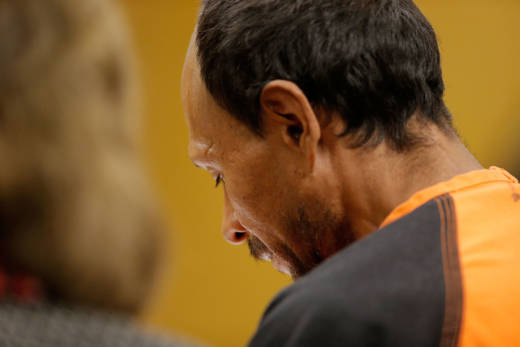"He did not know what it was and it fired," defense attorney Matt Gonzalez said outside court Thursday after testimony from the defense's last witness, an English and Spanish interpretation expert. "We covered a lot of ground, we think this jury has been very attentive, and so we’re ready to argue the case."
He said whether there is a substantial difference between admitting to firing a gun and admitting to pulling the trigger is "for the jury to decide."
"The people's entire theory of the case, from the beginning, has been he pulled the trigger," Gonzalez said, referring to the prosecution. "Inspector [Anthony] Ravano may have said that, and he may have believed that's what was being translated, but it wasn't."
The shot ricocheted off the concrete pier about 12 feet from a chair where Garcia Zarate was sitting. It flew 78 more feet before it struck Steinle in the lower back as she walked along the tourist pier with her father. She said "Help me dad," as she fell, James Steinle testified earlier in the trial. The bullet severed her abdominal aorta, according to the medical examiner's testimony, and she died later at the hospital.
The bulk of the prosecution's case focused on Garcia Zarate's appearance before and actions after the shooting. Within seconds of firing a single shot, Garcia Zarate tossed the gun into San Francisco Bay and walked away. He was arrested within an hour about a mile away.
The prosecution called a now-retired San Francisco police crime scene investigator who said the shot, despite the ricochet, did not bank left or right.
"A human being held a firearm, pointed it in the direction of Ms. Steinle, pulled the trigger and fired, killing her,” former SFPD Officer John Evans testified. “That is the only way this could have occurred that is reasonable."
The prosecution also implied that Garcia Zarate could have carried the Sig Sauer semi-automatic handgun with him to the pier in a bulky jacket he was wearing, instead of finding it under his seat as the defense argued.
The gun was stolen four days before Steinle's July 1, 2015, death from a U.S. Bureau of Land Management ranger's car as he stopped in San Francisco for dinner. Police were unable to find any evidence linking Garcia Zarate to that auto burglary or related car break-ins. His defense attorneys say the thefts were more likely the work of an auto-burglary ring rather than an impoverished homeless man who collected cans for money.
They presented enhanced surveillance video of the shooting scene on Monday, which showed a group of six people gathered around the chair the shot was fired from shortly before Garcia Zarate got there. The group was at the chair for almost 30 minutes, and some of the people appeared to set down and pick up a number of unidentifiable objects.
The defense also called two firearms experts to the witness stand. The first, former SFPD crime lab manager James Norris, testified that the gun was fairly low to the ground when it fired, likely below Garcia Zarate's knees as he sat in the chair. Firearms expert Alan Voth testified that the ricochet's proximity to the chair and distance from Steinle, among other factors, indicated an accidental discharge.
The prosecution's firearms expert, current SFPD supervising criminalist Andy Smith, testified that there are internal mechanisms that prevent the gun from firing unless the trigger is pulled. The series of Sig Sauer pistols, including the P239 model in the Steinle case, do not have external safety levers.
The defense sought to allow the jury to "dry fire" the weapon to feel the pressure required to pull the trigger -- about 4 to 5 pounds if cocked and about 10 pounds if not cocked. It's unclear as of Thursday whether jurors will be allowed to handle the weapon.
Closing arguments in the case are tentatively scheduled for Nov. 20.
